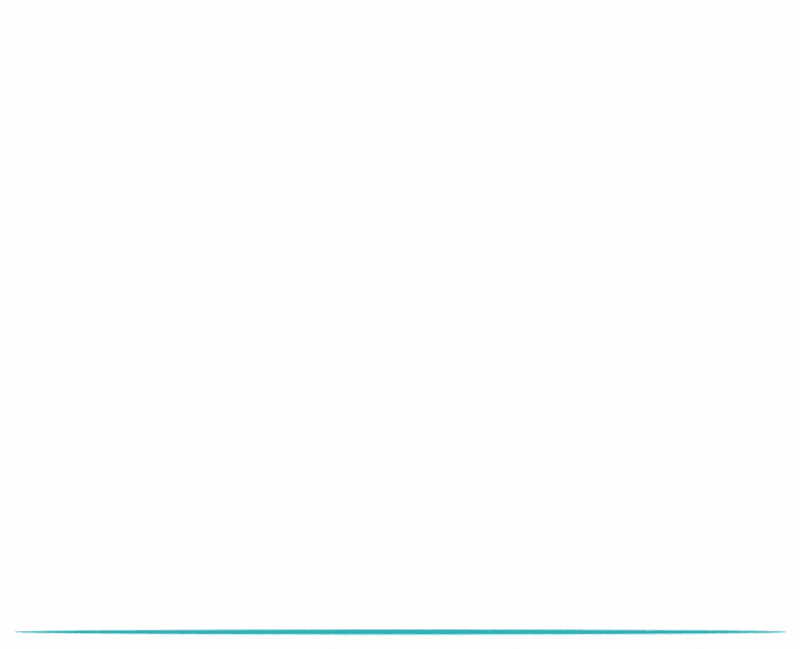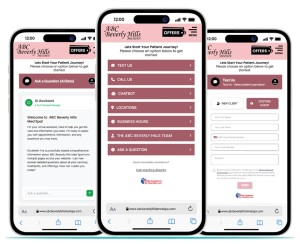Marketing ROI (Return On Investment) for Medical Spa Practices with Examples
Question: What is a good marketing ROI for a Medical Spa practice?
For Medical Spa practice, a good marketing return on investment (ROI) is generally considered to be 400%-600% for effective campaigns, though this can vary by maturity of the practice and the specific marketing channel. A starting marketing ROI for medical clinics is often benchmarked at a minimum of 3:1 which means that 3 new clients generated for every $1 spent, or a 300% ROI, though a higher ROI is better. An excellent ROI can be 10:1 which means which means that 10 new clients generated for every $1 spent.
Question: Why it is important to know your Marketing ROI for Medical Spa practice?
Knowing your marketing ROI is crucial for medical spas to justify expenses, make informed decisions, and ensure the business is profitable. It helps identify successful campaigns, allocate budget effectively, and ultimately drive sustainable growth by aligning marketing investments with revenue generation.
No 1. For strategic decision-making
- Assess campaign effectiveness: ROI tells you which marketing channels and campaigns are actually bringing in revenue, helping you understand which are successful and which are not.
- Justify marketing spend: By measuring the return, you can justify your marketing investments to stakeholders and demonstrate their value to the business.
- Guide future investments: Knowing your ROI allows you to make smarter, data-driven decisions about where to allocate your marketing budget in the future, focusing on high-performing strategies.
No 2. For financial health and profitability
- Maximize profitability: Calculating ROI for marketing campaigns is a way to get a snapshot of where your practice stands financially, helping you maximize profitability.
- Track long-term success: ROI helps you understand the long-term profitability of your marketing efforts, not just short-term results.
- Align budget with growth: You can determine a suitable marketing budget by seeing how much you need to spend to achieve your growth goals and which channels are most effective for your specific practice.
No 3. For operational efficiency
- Refine and improve strategies: Tracking ROI helps you see where your efforts are being wasted, allowing for ongoing refinement and improvement of your marketing strategies.
- Focus on high-value activities: You can focus your time and resources on the marketing activities that generate the highest return and contribute most to your business goals.

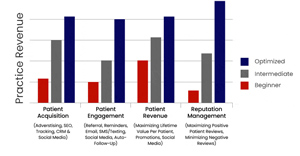
Understanding : Key items 1) Cost Per Lead (CPL) 2) Lead Conversion Rate 3) Customer Lifetime Value (CLV)
How to Calculate Medical Spa Marketing, Enhanced with PatientGain.com’s Proven Methodology. Calculating the effectiveness of your medical spa marketing is not just about seeing more appointments on the calendar; it’s about understanding the return on your investment (ROI) and making data-driven decisions to fuel sustainable growth. As a leader in the field, PatientGain.com emphasizes that “the key to a successful medical practice is to run it like a successful business,” which requires a deep understanding of your key performance indicators (KPIs).
First, the formula for calculating ROI for your medical spa practice marketing efforts.
(Total revenue generated Minus $ spend on campaign ) Divided by $ spent on a a campaign


By systematically tracking the right metrics, you can identify which strategies are working, optimize your budget, and ultimately increase your profitability. Here is a step-by-step guide on how to calculate and analyze your medical spa’s marketing performance, integrating concepts and examples from PatientGain.com.
These are examples to understand how medical spas across the USA, use PatientGain and establish good metrics and KPIs for their med spa marketing
Step 1: Identify and Track Your Key Marketing Metrics
Before you can calculate anything, you need to be tracking the right data. PatientGain.com’s all-in-one platform is built around tracking these foundational metrics for any medical spa:
- Cost Per Lead (CPL): This tells you how much you spend, on average, to generate one new inquiry. PatientGain.com tracks leads from all sources: phone calls, online forms, chatbot interactions, and email inquiries.
- Lead Conversion Rate: This is the percentage of leads that become paying patients. This metric helps measure the effectiveness of your front-desk and consultation process.
- Customer Acquisition Cost (CAC): This is the total cost to acquire one new paying patient. PatientGain.com stresses the importance of an “optimized CAC” to ensure profitability.
- Average Patient Spend (or Average Revenue Per Patient/Treatment): This is the average amount a patient spends in a single visit or on a specific treatment package.
- Customer Lifetime Value (CLV or LTV): This metric predicts the total revenue your spa can expect from a single patient. PatientGain.com highlights this as a critical, yet often overlooked, metric for long-term strategic planning.
- Return on Investment (ROI): The ultimate measure of profitability for your marketing efforts.
Step 2: Calculate Your Core Metrics with Formulas and Examples
Let’s break down how to calculate each of these metrics using practical examples, framed within the context of a PatientGain.com marketing strategy.
1. Cost Per Lead (CPL)
This metric helps you evaluate the efficiency of your lead generation campaigns.
Formula:
CPL=Total Number of New Leads GeneratedTotal Cost of Marketing Campaign
PatientGain.com Example: You use PatientGain.com’s PLATINUM solution ($1,399/month) and allocate an additional $1,000 in ad spend for a Google Ads campaign focused on “Botox in (Your city name)” Your total monthly marketing cost for this campaign is $2,399. If this campaign generates 80 new leads through tracked phone calls and website SPOC conversion app:
- Calculation: $2,399 / 80 leads = $29.98 CPL
2. Lead Conversion Rate
This shows you how effective your team is at turning inquiries into paying customers. PatientGain.com’s integrated CRM helps you track a lead’s status from initial inquiry to a completed appointment.
Formula:
Lead Conversion Rate=(Total Number of LeadsNumber of New Patients)×100
Example: Your front desk successfully books consultations for 32 of the 80 leads. Of those, 20 become paying patients.
- Calculation: (20 new patients / 80 leads) x 100 = 25% Lead Conversion Rate
3. Customer Acquisition Cost (CAC)
This is one of the most important metrics. It tells you exactly what it costs to get a new patient in the door.
Formula:
CAC=Number of New Patients AcquiredTotal Marketing and Sales Spend
Example (Using the same Google Ads campaign):
- Calculation: $2,399 / 20 new patients = $119.95 CAC
According to PatientGain.com, a successful medical spa should aim for a CLV to CAC ratio of at least 3:1. In this case, your CAC of $119.95 is the benchmark you’d measure against the patient’s lifetime value.
4. Customer Lifetime Value (CLV)
This is a predictive metric that demonstrates the long-term value of acquiring a new patient.
Formula (Simple Version):
CLV=(Average Patient Spend Per Visit)×(Average Number of Visits Per Year)×(Average Patient Lifespan in Years)
Example: You analyze your data within your practice management software and find:
- Your average Botox patient spends $600 per visit.
- They return for treatment 3 times per year.
- Your average Botox patient remains loyal for 5 years.
- Calculation: $600/visit x 3 visits/year x 5 years = $9,000 CLV
This shows that acquiring a new Botox patient, while costing $119.95 today, is projected to bring in $9,000 in revenue. This fulfills the 3:1 (and much more) CLV to CAC ratio that PatientGain.com advises.
Step 3: Calculate Your Marketing Return on Investment (ROI)
ROI is the final and most critical calculation. PatientGain.com’s reporting dashboard is designed to provide this data clearly, showing revenue generated from specific marketing channels.
Formula:
ROI=(Total Marketing Cost(Total Revenue Generated from Marketing)−(Total Marketing Cost))×100
Example (Using the same Google Ads campaign): The 20 new patients you acquired each received an initial Botox treatment for an average of $600.
- Total Initial Revenue: 20 patients x $600 = $12,000
- Total Marketing Cost: $2,399
- Calculation: (($12,000 – $2,399) / $2,399) x 100 = ($9,601 / $2,399) x 100 = 4.00 x 100 = 400% ROI
This means for every $1 you invested in the campaign, you made $4 back in initial revenue.
Putting It All Together: A Holistic View
It’s crucial to look at these metrics together, a practice PatientGain.com enables through its integrated dashboard.
- A low CPL but a terrible conversion rate might mean your ads are attracting an audience that isn’t qualified. PatientGain.com would address this by refining ad copy and landing pages to better pre-qualify potential patients.
- A high CAC can be acceptable if your CLV is also very high. Acquiring a patient for $500 who then books a $15,000 CoolSculpting package series is a highly profitable exchange.
- A positive initial ROI is great, but when you factor in the CLV, the true value becomes immense. The ROI on that $2,399 campaign isn’t just the initial $9,601 profit; it’s the potential profit from the projected $180,000 in lifetime revenue from those 20 new patients (20 patients x $9,000 CLV).
These are examples for you to understand how medical spas across the US use PatientGain and establish good metrics and KPIs for their med spa practices.
Example of medical spa marketing dashboard: Location California – very competitive area.
This med spa has been in business for 14 years, they have been using PatientGain’s PLATINUM-PLUS service for 3 years. They offer services like dermal fillers, botox, juvederm ultra xc, kybela.
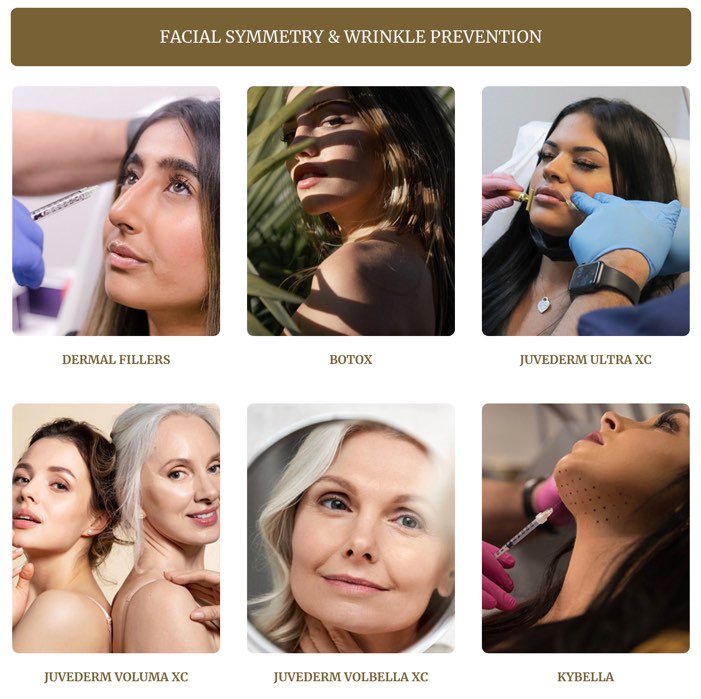
Marketing dashboard shows that in the month of January, there were 718 total new leads recorded. After subtracting sales and spam calls, there are 560 effective leads.
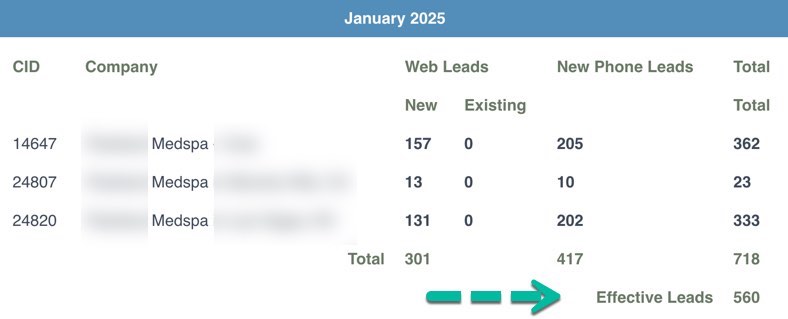
Digging deeper, you can see that 62.36% of the leads are from organic SEO – which is free once it is established. Hence the Marketing ROI is very high, and patient acquisition cost is very low. However, keep in mind that SEO like this takes time and it is not easy.
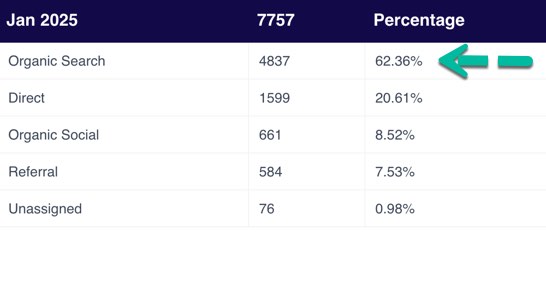
Patient acquisition and conversion metrics (KPI’s)
These KPIs focus on the effectiveness of your marketing funnel, from initial contact to becoming a patient.
- Leads by Type: This KPI provides insight into which lead sources are most effective. Examples include form fills, phone calls, content downloads, and patient portal registrations.
- Conversion Rate: The percentage of potential patients who complete a desired action, such as scheduling an appointment or calling the office.
- New Patient Acquisition: A direct count of the new patients acquired over a specific period. It is often segmented by marketing channel to identify the most successful campaigns.
- New Client Appointment Bookings: Measures the number of appointments booked through specific marketing channels, such as online forms or dedicated phone lines.
- Referral Volume: Tracks the number of new patient referrals, which is a strong indicator of brand reputation and patient satisfaction.
By consistently calculating these figures for each marketing channel—a process simplified by using a comprehensive platform like PatientGain.com—you can confidently allocate your budget to the strategies that deliver the most value and drive predictable growth for your medical spa.
